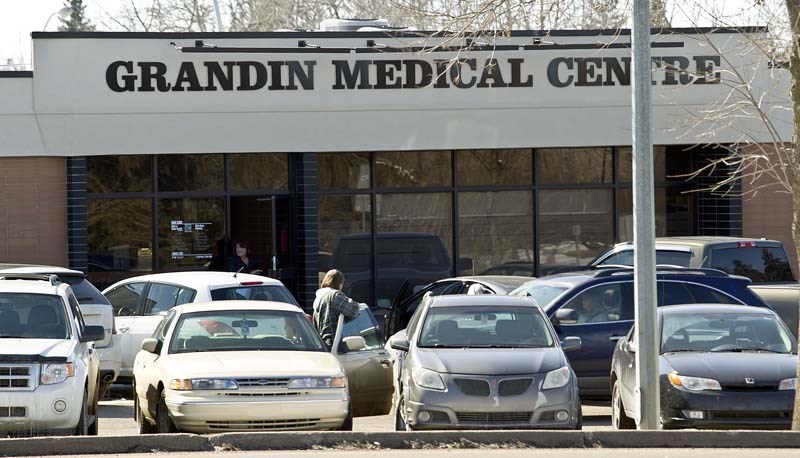The dispute over health-care funding erupted in St. Albert with a group of local doctors accusing the province of negotiating in bad faith and threatening to impose cuts that threaten patient care.
Health Minister Fred Horne strongly rejected the claims, which appeared in a full-page advertisement that was placed in the Gazette by a dozen physicians from the Grandin Medical Clinic.
The local advertisement was the latest salvo in a clash between the Alberta doctors and the province that emerged during the election a year ago and has grown steadily in intensity.
Darryl LaBuick, president of the St. Albert and Sturgeon Primary Care Network, repeated the doctors’ concerns this week, telling the Gazette that program cuts coming from the budget discussions will harm family physician clinics and patient care.
He expects close to a 20 per cent reduction in physician budgets once the talks are over.
Quoting from an article that appeared in the Edmonton Journal, he said “the average family physician bills about $316,000 per year but that is before some 42 and 60 per cent of overhead.”
“So if we have a 20 per cent reduction of that you can kind of see where the numbers are going to go,” he said.
LaBuick said the 20 per cent reduction will come from programs the government has threatened to cut. These included funding for overhead through the business cost program, the elimination of the business retention program and funding for programs that support computers in offices for electronic charts.
He added the government was putting money into building 140 new government-run family care clinics that would be less cost-effective than physician-led primary care clinics.
According to the Alberta Health website, family care clinics provide individual and family-focused primary health care programs and services.
Patients don’t require a physician appointment to get access to services such as diagnostic or laboratory tests, referrals to other physicians or other levels of care.
“Instead of supporting the hundreds of family physician clinics that are out there they feel it’s better to just dump a bunch of money into new structures that are untested, not designed, poorly envisioned and go from there,” LaBuick said.
LaBuick was among the 12 doctors at Grandin Medical Clinic who published the advertisement in last Saturday’s Gazette. The ad took the form of a letter that was addressed to Doug Horner, finance minister and MLA for Spruce Grove-St. Albert, and Stephen Khan, MLA for St. Albert.
It charged Health Minister Fred Horne “intentionally marginalized family physician participation in the development of FCCs (Family Care Clinics) for fear that logic will override campaign promises.”
The letter further said that the government would prefer to spend over $100 million to create duplicate services and Horne’s actions “clearly indicate the Redford government is anti-physician and non-collaborative.”
But Horne told the Gazette said that he has not announced any cuts to physician programs and has continued to fund them in the past two years.
The programs are part of the agreement with the Alberta Medical Association that was now under discussion, he said.
“It is true that I’ve been told by many family doctors that the business cost program is really important to them because they perhaps don’t get what they need under regular fee for service billings,” he said.
Horne stressed that the province is giving money to the primary care networks – about $2 billion paid to physicians through the regular medical services budget – and increased funding last year from $50 to $62 per patient.
This money was not compensating physicians directly but paid for nurse practitioners, pharmacists and physiotherapists who worked with the doctors.
He added that the question was not whether the programs will stay but how and when the government and the doctors would get to a new agreement.
They should not be concerned about government-run family care clinics though, he said. Those are used in areas that were not served or disadvantaged, or needed a special approach to health care.
He added that he was not sure what the doctors referred to when quoting $100 million in cost for the clinics.
“What Albertans are concerned about is better access to primary health care overall,” he said.
“They are not debating one model over another. What they are telling us is that they want good access.”
The advertisement placed by the Grandin Medical Clinic requested that Khan and Horner reconsider their government’s approach to health care and its relationship with physicians.
Khan could not be reached for comment. Horner’s office said he would not comment, adding it was inappropriate for him to discuss the matter publicly as it was a matter of negotiations between the government and the doctors.




